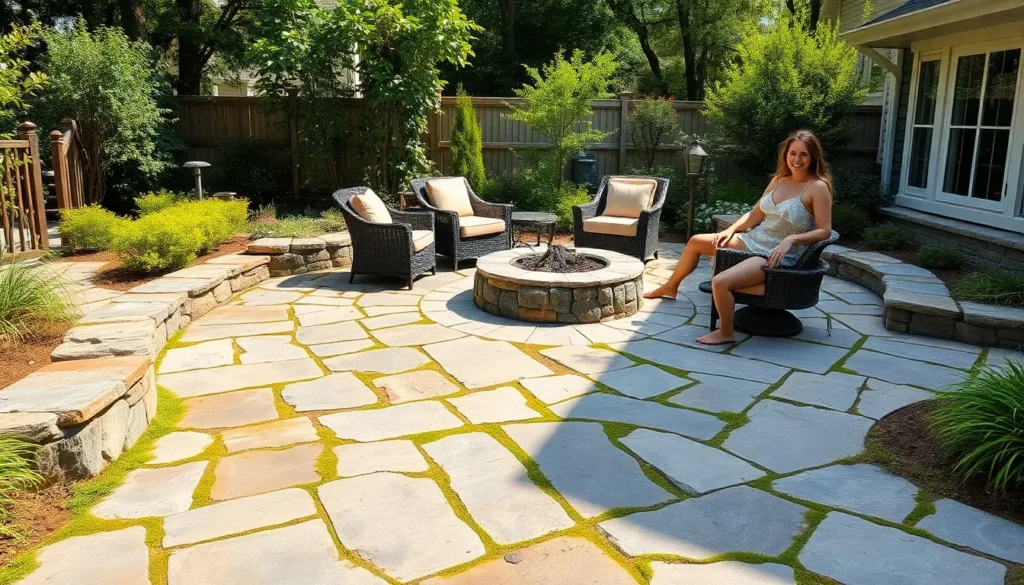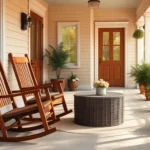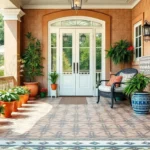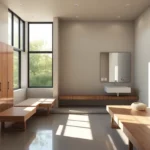We all dream of having that perfect outdoor space where we can unwind after a long day or entertain friends and family. A stone patio transforms your backyard into an elegant retreat that combines natural beauty with lasting durability. Whether you’re working with a sprawling lawn or a cozy courtyard stone offers endless possibilities to create your ideal outdoor living area.
Stone patios aren’t just about functionality – they’re about crafting a space that reflects your personal style while adding important value to your home. From rustic flagstone arrangements to sleek modern designs we’ve seen how the right stone choice can completely revolutionize any backyard space.
Ready to turn your outdoor area into the envy of the neighborhood? We’ll explore creative stone patio ideas that work for every budget style preference and yard size. Let’s jump into the industry of natural stone and discover how you can create your own backyard paradise.
Natural Flagstone Patio Designs for Rustic Charm
Natural flagstone delivers the perfect foundation for creating outdoor spaces that blend seamlessly with nature’s organic beauty. We’ll explore how these time-tested stone patio techniques can transform your backyard into a rustic haven.
Irregular Flagstone Patterns
Irregular flagstone patterns embrace the natural shapes and sizes that make each stone unique. We recommend selecting stones with varying dimensions ranging from 12 inches to 36 inches across to create visual interest and authentic appeal. Larger stones work best as anchor pieces in central areas while smaller fragments fill gaps naturally.
Puzzle piece arrangements allow flagstones to fit together organically without forced geometric shapes. We’ve found that leaving 1 to 3 inch gaps between stones creates the most natural appearance while providing proper drainage. This technique mimics how stones naturally settle in creek beds and mountain paths.
Random orientation adds to the rustic charm by avoiding linear patterns that appear too structured. We suggest rotating each stone to find its most stable position rather than forcing predetermined angles. This approach creates flowing pathways that guide visitors naturally through your outdoor space.
Moss-Filled Joint Techniques
Moss filled joints between flagstones create living carpets that soften harsh stone edges beautifully. We plant moss species like cushion moss or sheet moss directly into 2 to 4 inch wide joints for optimal coverage. These hardy plants thrive in partially shaded areas and require minimal maintenance once established.
Preparation involves mixing equal parts peat moss and topsoil to create the perfect growing medium for joint planting. We fill joints halfway with this mixture before pressing moss patches firmly into place. Light watering every few days during the first month helps establish strong root systems.
Natural colonization occurs when we leave joints partially filled with organic matter and allow native moss species to establish themselves over time. This patient approach typically takes 6 to 12 months but results in the most authentic looking moss growth patterns that complement local ecosystems.
Weathered Stone Color Variations
Weathered stone color variations create depth and character that new stones simply cannot match. We source flagstones with natural aging that displays gray undertones mixed with rust colored streaks and cream highlights. These color combinations develop over decades of exposure to natural elements.
Patina development happens when iron rich stones interact with moisture and oxygen to create beautiful oxidation patterns. We’ve observed that stones from quarries in Pennsylvania and New York often display the most striking color variations due to their mineral composition. These regions produced flagstones with distinctive blue gray bases accented by golden brown weathering.
Blending different stone ages within the same patio design adds visual richness without appearing mismatched. We recommend using 60% weathered stones as primary surfaces and 40% newer stones as accent pieces. This ratio maintains rustic authenticity while ensuring structural integrity throughout your backyard stone patio installation.
Geometric Bluestone Patio Layouts for Modern Appeal
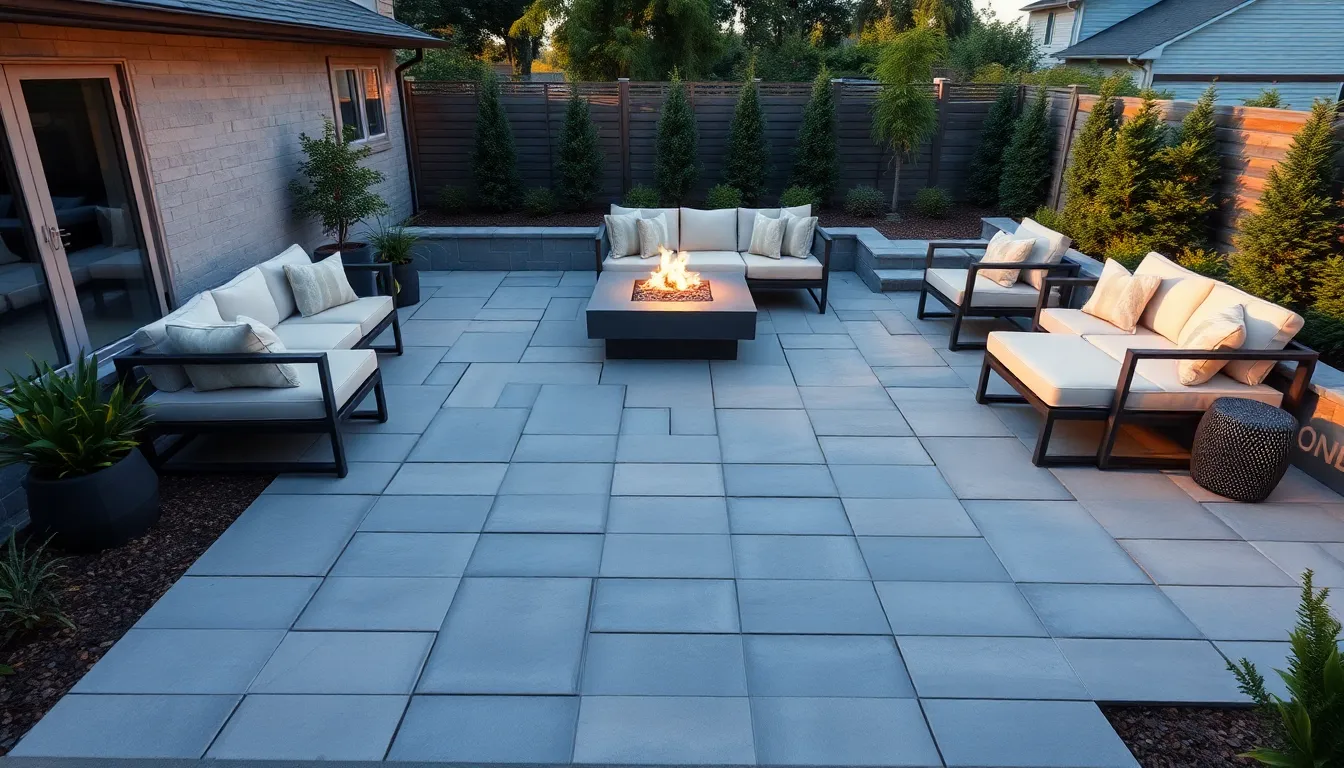
Bluestone’s distinctive blue-gray hues create stunning geometric patterns that transform ordinary backyards into sophisticated outdoor retreats. We’ll explore three striking layout options that showcase bluestone’s natural beauty while delivering the clean lines modern homeowners crave.
Rectangular Grid Patterns
Uniform rectangles or squares arranged in a precise grid formation deliver the ultimate modern minimalist aesthetic. This pattern works exceptionally well when paired with contemporary outdoor furniture in white or neutral tones, allowing the bluestone’s elegant coloring to take center stage. Sharp edges and orderly repetition create clear pathways between seating areas while maintaining visual consistency throughout your patio space.
Clean geometric lines integrate seamlessly with minimalist landscaping approaches. We recommend using uniform bluestone slabs cut to identical dimensions for maximum impact. The grid’s structured appearance emphasizes the stone’s natural texture while creating defined zones for dining, lounging, or entertaining guests.
Herringbone Arrangements
Alternating diagonal rows create ever-changing zigzag patterns that add movement and visual interest to your patio surface. This arrangement places bluestone pavers in V-shaped formations that draw the eye across the space without overwhelming the stone’s subtle natural shades. The pattern works particularly well in compact areas where you want to maximize visual impact.
Herringbone designs balance structure with organic flow, making smaller patios appear larger and more ever-changing. We find this pattern especially effective when combined with integrated lighting or fire pit features that highlight the textural variations created by the alternating stone placement.
Mixed Size Geometric Designs
Combining rectangles, squares, and irregular polygons in repeating or random arrangements creates unique character while maintaining modern appeal. This eclectic approach allows customization based on your exact space requirements and design preferences. The varied shapes blend contemporary geometry with bluestone’s rustic natural charm.
Strategic placement of different sized stones creates focal points and visual anchors throughout your patio. We suggest incorporating larger rectangular pieces as primary elements while using smaller squares and polygons to fill spaces and add detailed interest. This flexibility makes mixed geometric designs perfect for irregularly shaped outdoor areas or when working around existing industry features.
Circular Stone Patio Ideas for Intimate Gatherings
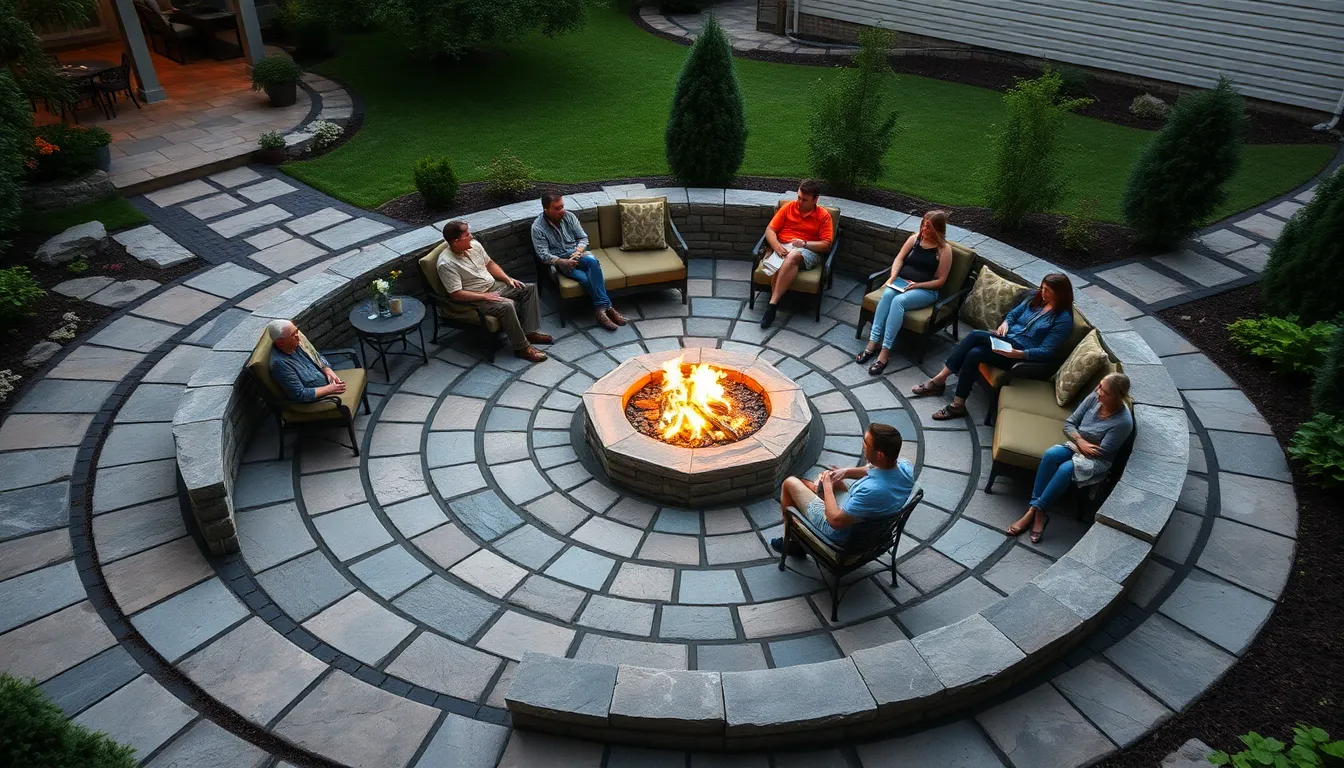
We’ll explore how circular stone patios create the perfect atmosphere for cozy gatherings. These rounded designs naturally encourage conversation and connection among guests.
Concentric Ring Patterns
Concentric ring patterns transform your patio into a stunning visual masterpiece with multiple stone circles radiating outward from the center. We recommend using different stone colors or types between each ring to create striking contrast and depth. Flagstone works beautifully for the outer rings while bluestone can highlight the inner circles. This layered approach guides the eye toward your central focal point, whether it’s a fire pit or seating area. Different textures between rings add visual interest while maintaining structural integrity throughout the entire patio surface.
Radiating Spoke Designs
Radiating spoke designs create an elegant wheel pattern that extends outward from your patio’s center point. We arrange stones in wedge shaped segments that fan dramatically outward, giving your space a ever-changing and sophisticated appearance. This design emphasizes the circular form while drawing attention outward to expand the perceived size of your gathering area. Sandstone pavers work exceptionally well for spoke patterns because their uniform thickness creates clean lines between segments. The wedge shapes naturally define separate conversation zones while maintaining unity across the entire patio space.
Central Fire Pit Integration
Central fire pit integration makes your circular stone patio the ultimate gathering destination for intimate conversations and relaxation. We position the fire pit at the exact center to create a natural focal point that draws people together, especially during cooler evenings. Comfortable seating arranged around the fire pit establishes an inviting ambiance perfect for small groups. Stone patios with central fire pits often combine concentric rings or spoke patterns to highlight the fire feature and clearly define seating areas. This combination creates both warmth and visual appeal that encourages guests to linger and enjoy your outdoor space.
Multi-Level Stone Patio Concepts for Sloped Yards
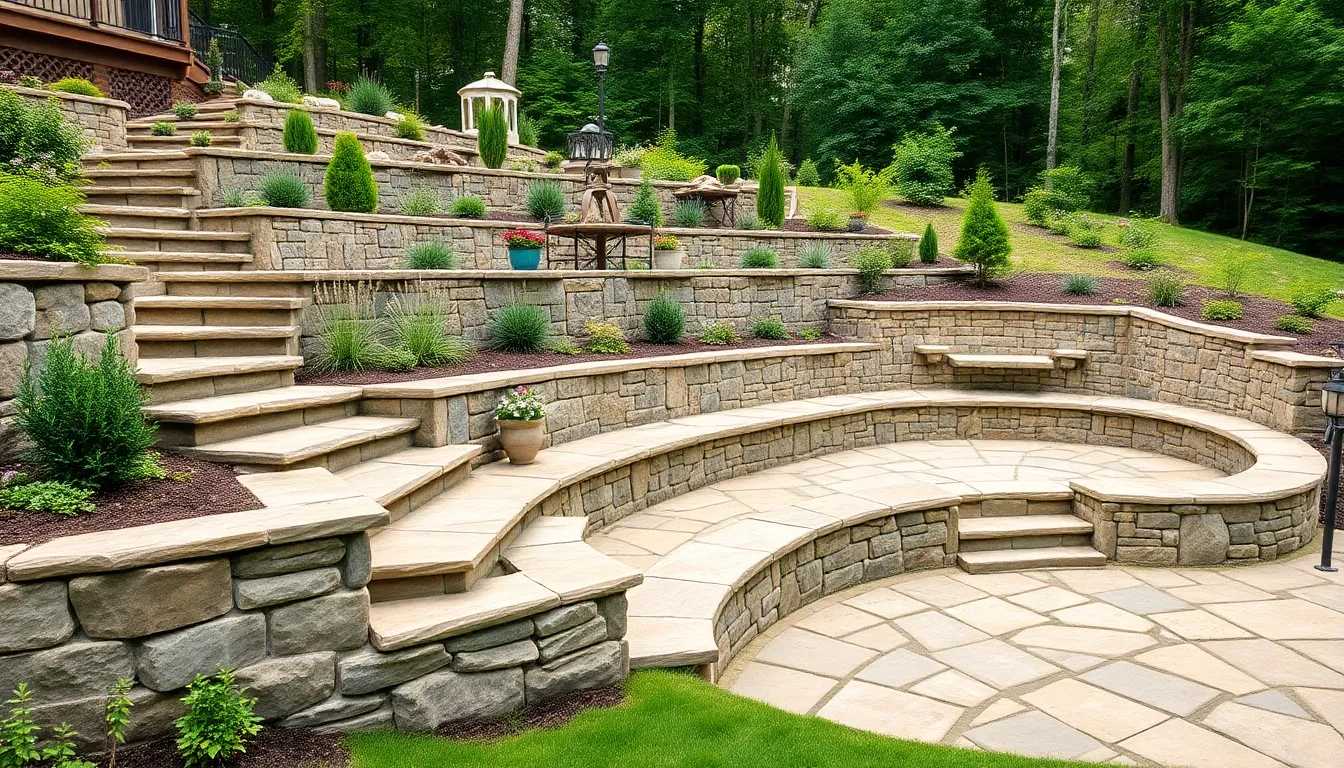
Working with sloped terrain doesn’t mean sacrificing your dream stone patio. Multi-level designs transform challenging slopes into stunning outdoor spaces that maximize both function and visual appeal.
Terraced Retaining Wall Systems
Stone retaining walls create the foundation for successful multi-level patios by holding back soil and preventing erosion across different tiers. We recommend matching your retaining wall materials to your patio stones for visual continuity throughout the design. These walls serve dual purposes by doubling as comfortable seating areas, maximizing space efficiency while improving the overall functionality of your outdoor living space.
Natural stone options like bluestone, flagstone, or sandstone work exceptionally well for retaining wall construction due to their durability and weather resistance. Building heights should vary between 18 to 36 inches to create distinct levels while maintaining structural integrity. Each terrace provides a flat, usable area for furniture placement or entertaining, effectively breaking up steep gradients into manageable outdoor rooms.
Cascading Step Transitions
Stone steps that cascade naturally down your slope create smooth movement between patio levels while adding rhythmic visual flow to the overall design. Flagstone and tilestone materials offer excellent durability and natural texture that complements your patio’s aesthetic seamlessly. These transitions should follow the natural contour of your yard to maintain an organic appearance.
Design your cascading steps with consistent rise and run measurements for safety and visual harmony across all levels. Wide treads accommodate comfortable walking while creating opportunities for potted plants or decorative elements. The step materials can incorporate contrasting colors or textures to define the pathway and guide guests naturally through your multi-level space.
Built-In Seating Levels
Integrated stone benches and ledges maximize your patio’s social potential while eliminating the need for additional furniture storage. We position these seating elements along terrace edges or incorporate them directly into retaining wall designs for seamless integration. Stone benches typically measure 18 inches in height and 15 to 18 inches in depth for optimal comfort.
Following your yard’s natural contours, built-in seating creates intimate conversation zones throughout the different levels. These permanent features require minimal maintenance compared to traditional patio furniture while providing durable, weather-resistant seating options. Consider adding cushions or pillows during entertaining season to enhance comfort without compromising the stone’s natural beauty.
Permeable Stone Patio Solutions for Drainage Management
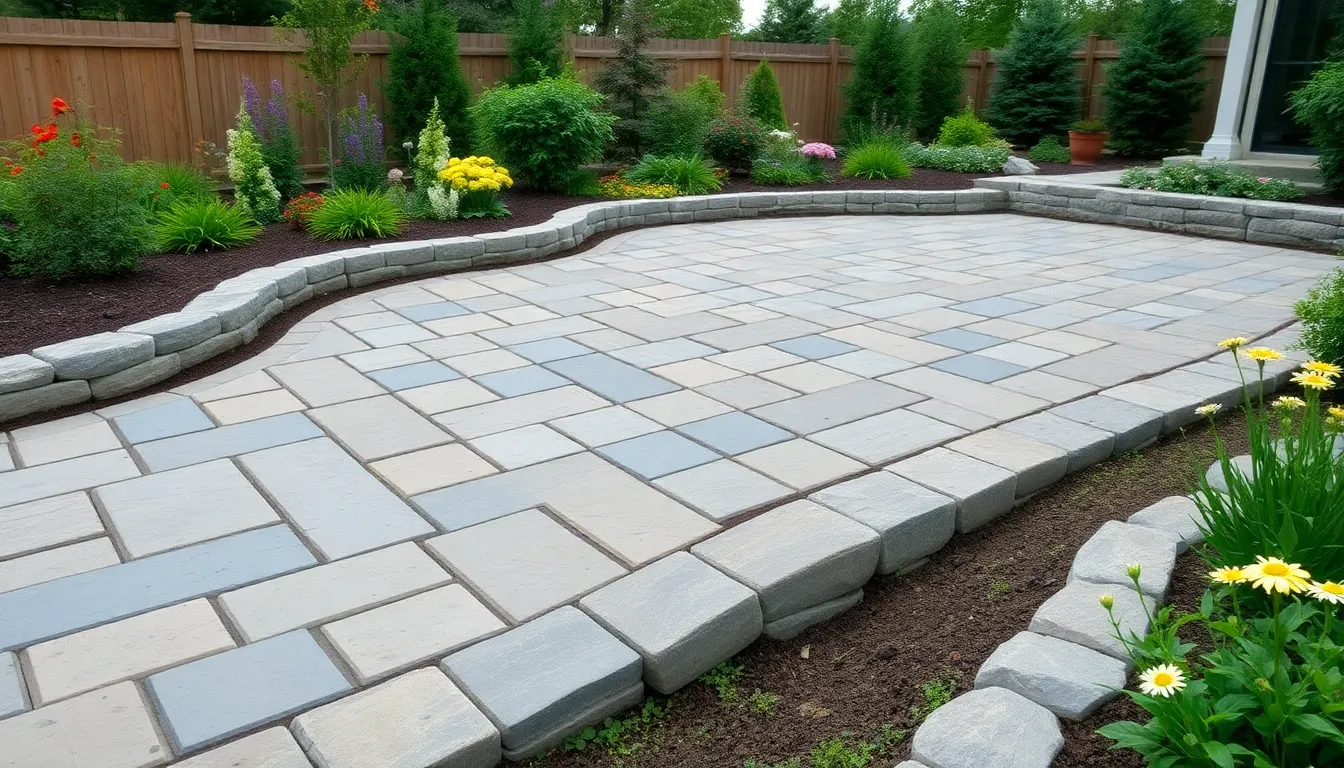
Managing water flow around your stone patio protects both your investment and your home’s foundation. We’ll explore three proven drainage answers that keep your outdoor space functional while maintaining its visual appeal.
Gravel-Filled Joint Systems
Filling joints between patio stones with gravel creates natural drainage channels that prevent water pooling. Small stones or gravel allow water to infiltrate through gaps and drain into the ground below, eliminating surface runoff that can damage your patio’s foundation.
This approach offers dual benefits beyond drainage management. Visual contrast between stone surfaces and gravel joints adds textural interest to your patio design. Installation remains straightforward since you don’t need complex infrastructure or specialized equipment to carry out this permeable solution.
We recommend using angular gravel that locks together better than rounded stones. Size your gravel appropriately for joint width to ensure proper water infiltration while preventing displacement during heavy rains.
Raised Paver Installation
Elevating your stone patio above ground level creates drainage space underneath that channels water away effectively. This method involves laying pavers on a base structure with gravel layers or drainage pipes beneath the surface.
Water flows underneath the raised patio rather than pooling on top, protecting your sub-base from saturation and erosion. Slight elevation prevents surface water accumulation while maintaining easy access to your outdoor space.
Construction requires careful planning of the underlying drainage system. Proper gravel depth and pipe placement ensure long term performance of your raised paver installation.
French Drain Integration
French drains capture and redirect heavy runoff around your patio perimeter using trenches filled with gravel and perforated pipes. This system proves especially valuable for patios with poor soil drainage or areas that receive important water flow.
Trenches channel excess water away from both your patio and home foundation, preventing seepage and structural damage. Perforated pipes within the gravel beds efficiently transport collected water to designated drainage areas.
Integration works best when we position French drains along natural water flow patterns. Strategic placement around your patio’s perimeter creates comprehensive drainage coverage that handles even severe weather events.
Mixed Material Stone Patio Combinations
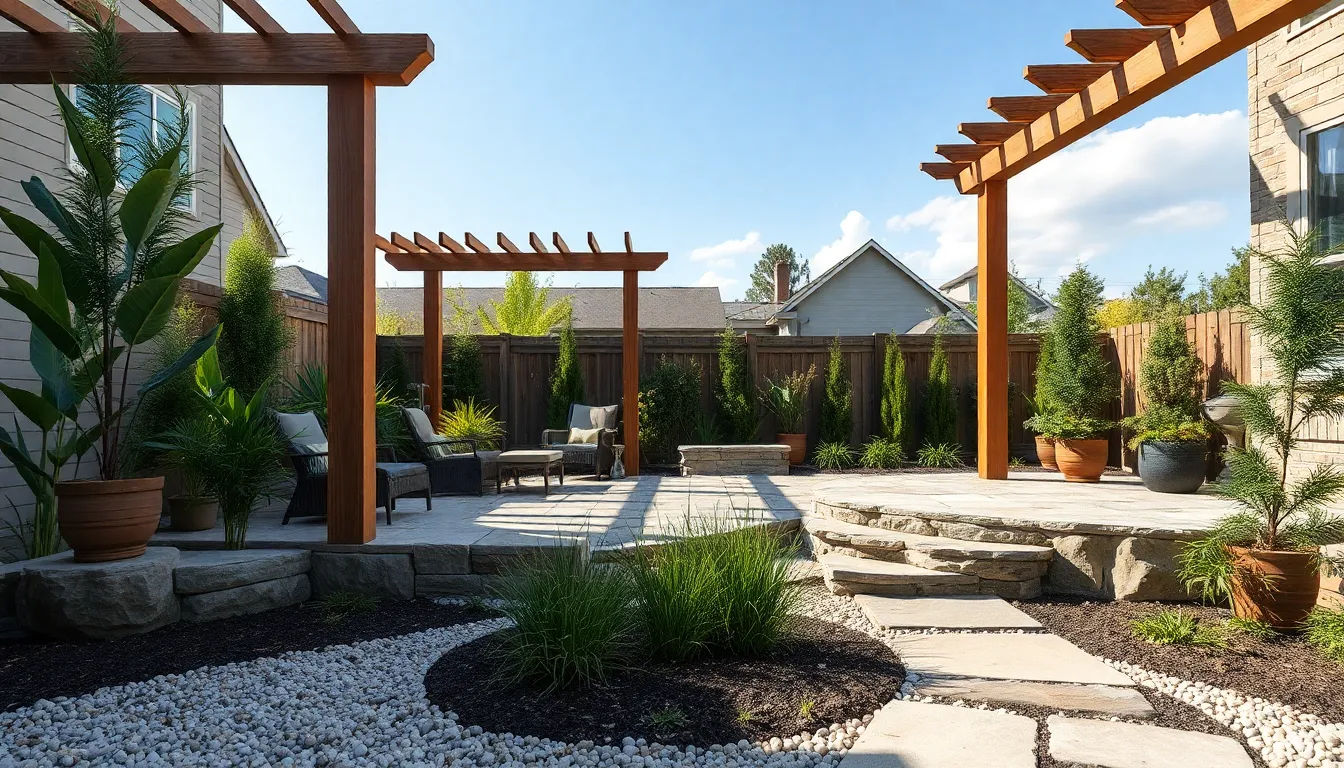
Blending different materials with stone creates ever-changing outdoor spaces that capture attention while maintaining functionality. Stone patios become more visually compelling when we incorporate complementary elements that enhance both texture and design appeal.
Stone and Wood Accents
Wood elements transform stone patios into warm and inviting gathering spaces. Vine covered wooden pergolas create dappled shade over stone surfaces, contributing to a cool and welcoming atmosphere that encourages extended outdoor enjoyment. We can install wood beams and lattice structures on stone columns for classical elegance, blending natural textures that add warmth to the stone’s inherent solidity.
Wooden decking borders provide smooth transitions between stone patio areas and surrounding landscapes. Built in wooden seating complements stone surfaces beautifully, offering comfortable spots for relaxation while maintaining design cohesion. Cedar and teak work particularly well with natural stone, as these materials weather gracefully and develop attractive patinas over time.
Gravel Border Treatments
Gravel serves as an effective border treatment that defines stone patio spaces while improving overall drainage. We recommend laying pea gravel over industry fabric around patios to create clean edges, enhance water management, and provide contrasting texture and color variations. This approach helps transition smoothly between stone patios and planted areas or lawn spaces.
Different gravel sizes create distinct visual effects around stone installations. Fine crushed stone provides neat, formal borders that complement geometric patio layouts, while larger river rock creates more casual, naturalistic edges. Gravel borders maintain their appearance with minimal upkeep, making them practical long term answers for busy homeowners.
Planted Joint Alternatives
Plants growing between stone joints create living patio surfaces that blend hardscape with garden elements. Groundcover plants like thyme, sedum, and moss soften hardscape edges while adding greenery directly into the patio area. We find that low growing herbs such as chamomile and creeping oregano release pleasant fragrances when stepped on, improving the sensory experience.
This approach transforms traditional stone patios into lush, functional outdoor spaces that change with the seasons. Planted joints require less maintenance than traditional mortar while providing natural drainage and wildlife habitat. Selecting drought tolerant plants ensures the living elements thrive without constant watering, creating sustainable outdoor environments that remain beautiful year round.
Small Space Stone Patio Maximization Strategies
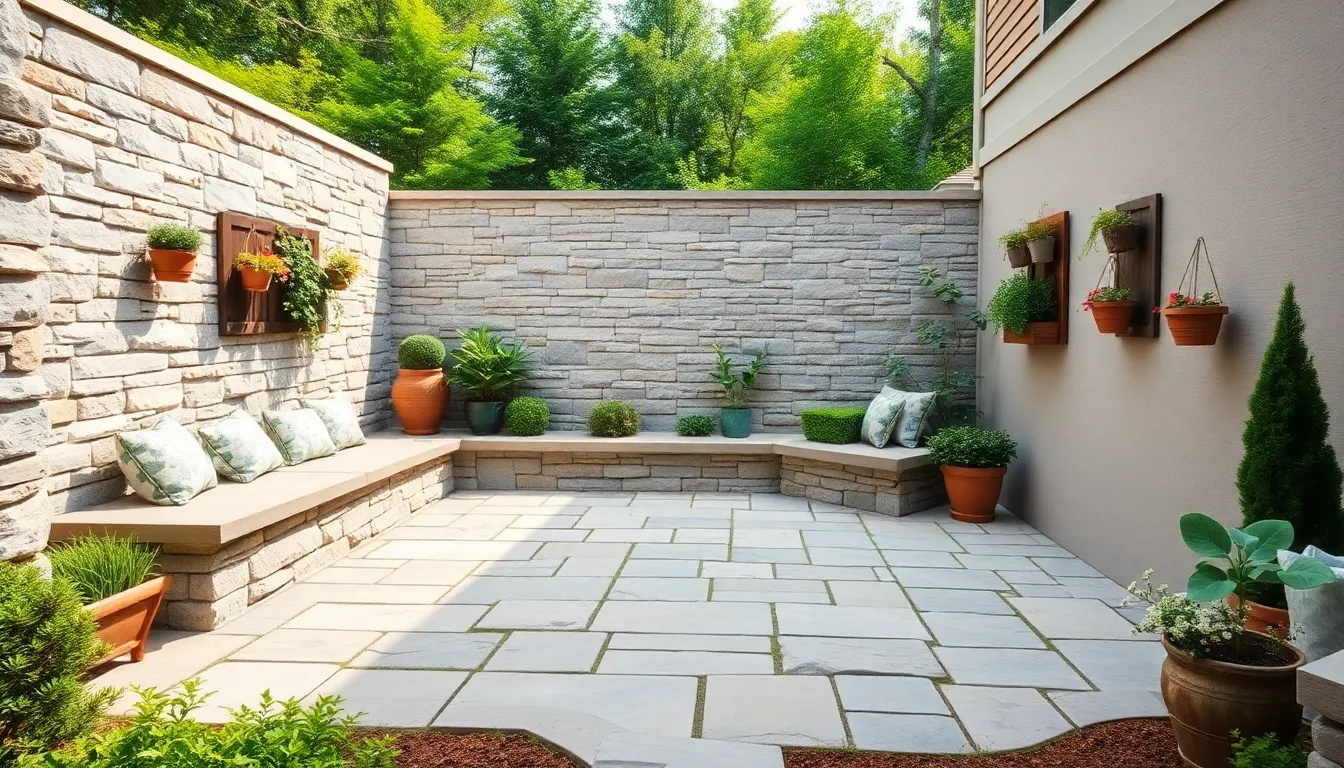
Maximizing small backyard spaces requires strategic planning and creative stone patio design approaches. We’ll explore proven techniques that transform compact areas into functional outdoor retreats.
Compact Corner Designs
Corner spaces become valuable assets when we design stone patios with curved or circular layouts that maximize tight areas. Natural flagstone works exceptionally well in these configurations because its irregular shapes fit awkward corners while creating organic, inviting atmospheres.
Custom ledgestone walls positioned in corners serve dual purposes by providing both privacy and cozy seating nooks. These stone features enhance the sense of space rather than cramping it, making corners feel intentional and welcoming.
Defined seating or dining zones emerge naturally when we incorporate circular stone patterns that guide traffic flow around corner installations. This approach prevents dead space while creating intimate gathering areas that feel purposeful and well planned.
Vertical Element Integration
Stone pillars and vertical wall planters add height and dimension without expanding the patio’s footprint. We can incorporate these features to draw the eye upward, creating an illusion of larger space while maintaining functionality.
Arbors with stone bases integrate seamlessly into small stone patios and provide opportunities for hanging plants or outdoor lighting. This combination saves precious floor space while adding architectural interest and cozy ambiance.
Tall shrubs or trees planted near stone patios increase privacy while improving vertical interest throughout the small backyard. Privacy screens made from stone or complemented by stone bases create boundaries without overwhelming compact spaces.
Space-Saving Furniture Placement
Compact, multi-functional outdoor furniture such as foldable chairs, storage benches, and small-footprint tables fit comfortably on stone patios without creating overcrowded conditions. We recommend choosing pieces that serve multiple purposes to maximize utility.
Built-in stone seating around patio perimeters eliminates the need for additional furniture while preserving valuable space. Low stone walls double as comfortable seating options and reduce furniture storage requirements.
Open walkways and unblocked sightlines enhance the perception of spaciousness when we arrange furniture thoughtfully. Strategic placement prevents visual barriers while maintaining easy movement throughout the patio area.
Large Stone Patio Entertainment Zones
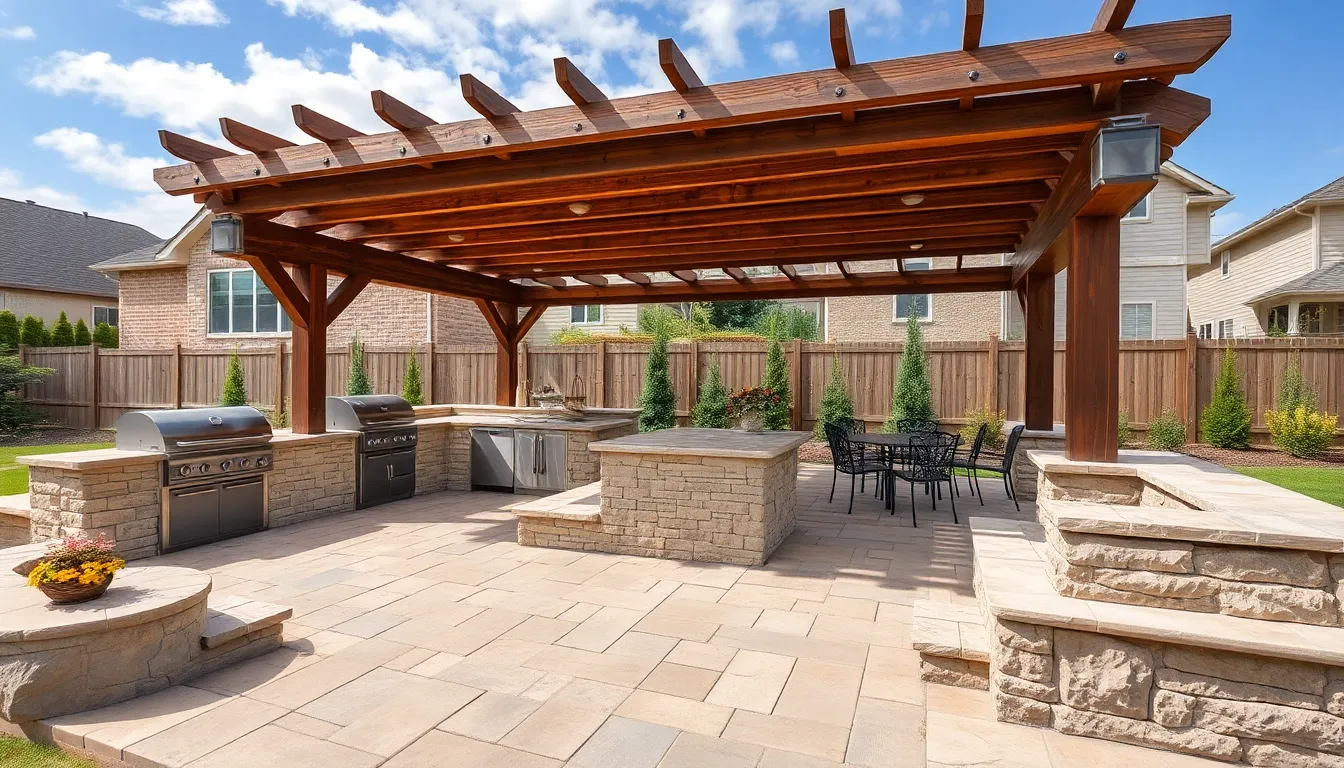
Expanding beyond intimate gathering spaces, we find that large stone patios offer the perfect foundation for creating comprehensive entertainment zones that accommodate bigger groups and more diverse activities.
Outdoor Kitchen Integration
Integrating an outdoor kitchen transforms your large stone patio into a culinary destination where cooking becomes part of the entertainment experience. Natural stone materials like flagstone, bluestone, and sandstone provide durable, attractive bases for kitchen structures and prep areas that withstand outdoor elements while maintaining visual appeal. Positioning the kitchen adjacent to seating areas creates seamless flow during gatherings, allowing hosts to interact with guests while preparing meals.
Stone and tile surfaces excel in outdoor kitchen applications due to their easy maintenance requirements and natural ability to blend with backyard aesthetics. Built-in grills, prep counters, and storage areas can be constructed directly into the stone patio design, creating a cohesive look that feels intentional rather than added as an afterthought. These integrated elements ensure your entertainment zone functions as efficiently as it looks beautiful.
Multiple Seating Areas
Creating multiple seating zones on your large stone patio establishes versatile spaces for various activities including lounging, dining, and socializing without overcrowding any single area. Retaining walls and built-in stone benches multiply seating capacity while maintaining the clean lines that make stone patios so appealing. These permanent seating answers eliminate the need for storing outdoor furniture during off seasons.
Visual separation between seating areas can be achieved through strategic plantings, pergolas, or variations in stone pattern and texture that create intimate yet connected zones. Different stone arrangements help define each area’s purpose while maintaining overall design cohesion throughout the entertainment space. This approach allows guests to naturally migrate between zones based on their preferred activities or conversation groups.
Pergola and Shade Structures
Adding pergolas or shade structures over portions of your large stone patio provides essential cooling shade and dappled sunlight that makes the space comfortable throughout the day. Vine covered pergolas built with wood beams and lattice set on classical style stone or concrete columns add natural beauty and partial shelter that complements the stone’s organic appeal. These structures create defined outdoor rooms within the larger entertainment zone.
Pergolas blend rustic and elegant styles perfectly with stone patios, offering the ideal combination for outdoor entertaining that feels both sophisticated and welcoming. Strategic placement of shade structures allows you to designate exact areas for different times of day, ensuring your entertainment zone remains functional from morning coffee to evening gatherings. The interplay between stone’s permanence and pergola’s organic elements creates visual interest that enhances the overall entertainment experience.
Budget-Friendly Stone Patio Installation Methods
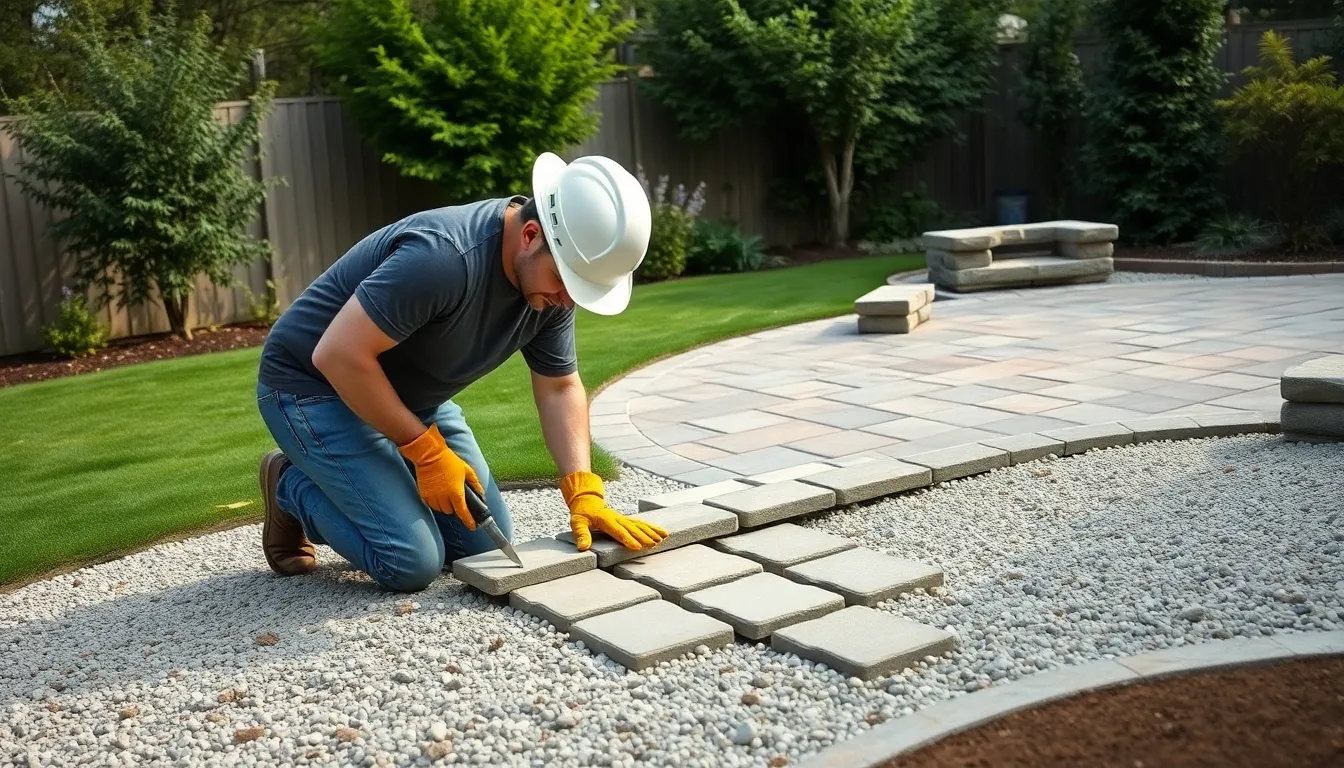
Creating a stunning stone patio doesn’t require very costly. We’ll explore cost effective approaches that deliver professional results while keeping your budget intact.
DIY-Friendly Paver Options
Interlocking concrete pavers offer the perfect starting point for novice installers seeking professional looking results. These versatile materials eliminate mortar requirements and provide straightforward installation processes that weekend warriors can master. Pavers come in many shapes, colors, and sizes, giving you creative flexibility without specialized tools or expertise.
Natural stone options like flagstone and bluestone present excellent choices for DIY enthusiasts ready to tackle slightly more challenging projects. These materials require proper preparation and careful handling due to their weight, but their stunning appearance justifies the extra effort. We recommend starting with smaller flagstone pieces that are easier to maneuver and position accurately.
Precast concrete tiles deliver uniformity and simplified placement procedures that non professional installers appreciate. These materials create clean, consistent patterns while offering various textures and colors that mimic natural stone appearances. Installation becomes remarkably straightforward when you use a properly prepared base of compacted gravel and leveling sand.
Creative paver applications extend beyond basic patio surfaces to include walkways, borders, and accent features throughout your outdoor space. This versatility allows you to tie different areas together while maximizing your material investment and creating cohesive design themes.
Reclaimed Stone Sources
Demolition sites provide treasure troves of character rich materials that bring unique history to your patio project. These locations often yield aged flagstone, weathered bricks, and distinctive pavers that would cost significantly more when purchased new. Contact local demolition companies to inquire about available materials and pickup arrangements.
Landscaping salvage yards specialize in rescued stone materials that combine environmental responsibility with budget consciousness. These businesses collect stones from various projects and offer them at fraction of retail prices while ensuring quality and usability. You’ll discover materials with authentic patina and texture that enhance rustic patio designs.
Historic building renovations occasionally release beautiful stone materials that carry architectural significance and exceptional craftsmanship. These stones often feature superior quality and unique characteristics that aren’t available in modern materials, adding distinctive charm to your outdoor space.
Environmental benefits make reclaimed stone an increasingly popular choice among eco conscious homeowners. Using salvaged materials reduces landfill waste while decreasing demand for newly quarried stone, creating positive environmental impact alongside budget savings.
Simplified Installation Techniques
Site preparation begins with clearing and leveling your designated patio area using basic hand tools and minimal excavation. This straightforward approach eliminates heavy equipment costs while ensuring proper foundation establishment. Focus on removing vegetation and creating consistent grade across the installation area.
Base layer construction involves laying compacted gravel that provides essential drainage and stability for your stone patio. This critical step requires only standard tools like rakes and tampers, making it accessible for DIY installers. Proper gravel compaction prevents future settling and maintains long term patio integrity.
Sand leveling systems create smooth, even surfaces that accommodate stone placement without complex measuring or specialized equipment. Screeding sand across your gravel base ensures consistent thickness and proper stone seating. This technique allows for easy adjustments during installation while maintaining professional appearance standards.
Stone placement methods emphasize careful positioning with small gaps that accommodate sand or pea gravel filling. This approach avoids complicated mortar work while creating attractive, stable installations that handle weather changes effectively. Pattern planning before placement helps ensure balanced, visually appealing results.
Modular feature integration allows you to incorporate fire pits, retaining walls, or pergolas as separate components that enhance functionality without complex construction requirements. These elements can be added gradually as budget allows, creating evolving outdoor spaces that grow with your needs and preferences.
Stone Patio Maintenance and Longevity Tips
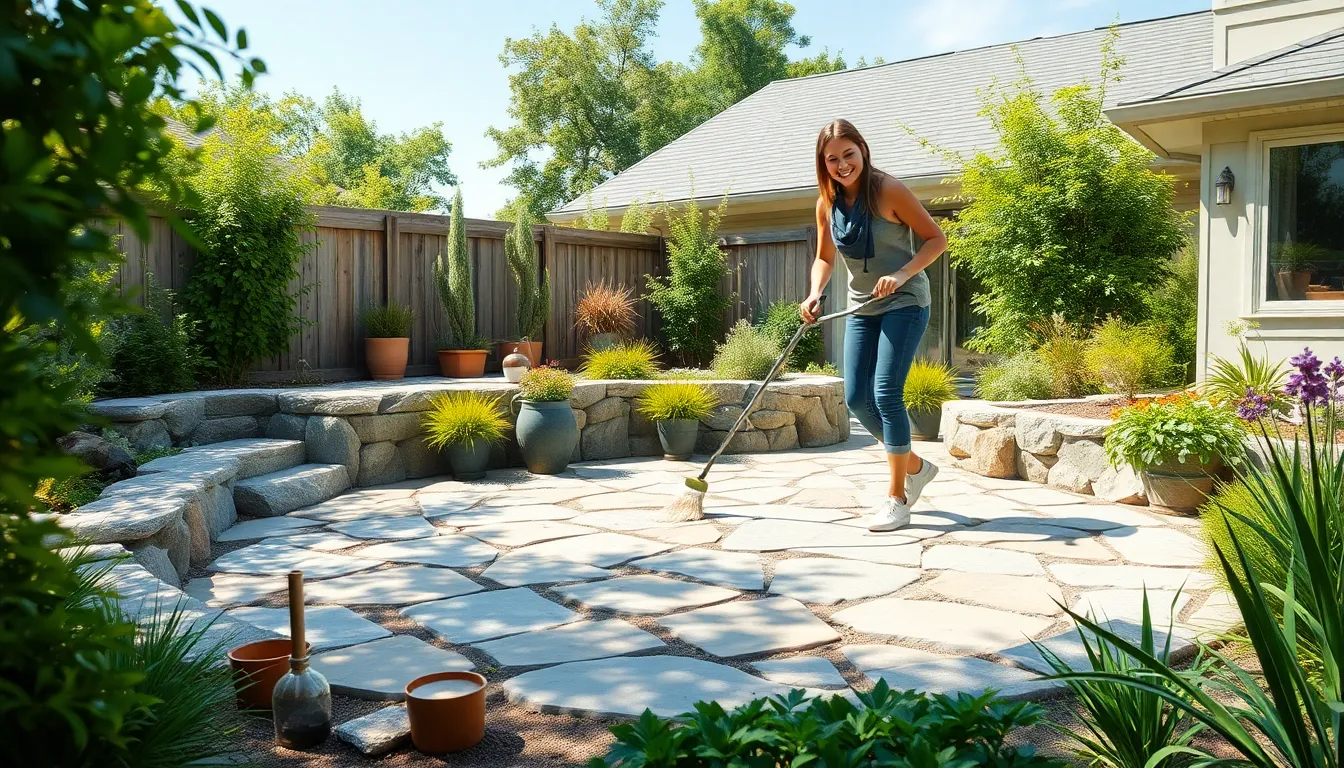
After creating your beautiful stone patio, proper maintenance ensures it remains stunning for decades. Strategic care practices protect your investment while preserving the natural beauty that makes stone patios so desirable.
Seasonal Cleaning Schedules
Spring and fall cleaning sessions form the foundation of effective stone patio maintenance. We recommend focusing on these two critical seasons when debris accumulates most heavily and weather conditions create ideal cleaning opportunities.
Dry debris removal starts every cleaning session with a thorough sweeping using a stiff broom. Leaves, dirt, and organic matter settle into joints and crevices throughout the seasons, requiring consistent removal to prevent staining and deterioration.
Wet cleaning techniques follow dry removal using mild detergent or specialized stone cleaners. We suggest mixing gentle cleaning answers with water and applying them with either a pressure washer on low settings or a standard garden hose for delicate stone surfaces.
Chemical avoidance protocols protect your stone patio from unnecessary damage. Harsh chemicals erode natural stone surfaces and break down joint fillers, creating expensive repair needs that proper cleaning prevents.
Joint Repair Techniques
Regular joint inspections reveal cracks and missing mortar before they compromise your patio’s stability. We recommend checking joints monthly, looking for signs of separation, erosion, or weed infiltration that indicate repair needs.
Polymeric sand applications provide effective answers for minor joint issues. This specialized sand mixture expands when moistened, creating flexible joints that accommodate natural stone movement while preventing weed growth and insect intrusion.
Mortar mix repairs address more important joint problems using appropriate materials matched to your stone type. Fresh mortar applications restore structural integrity and create weatherproof seals that extend patio life.
Stone resetting procedures handle loose or uneven stones that create tripping hazards. We position displaced stones using fresh sand bases or mortar applications, ensuring level surfaces and proper drainage patterns.
Weather Protection Strategies
Breathable sealant applications occur every 1 to 3 years depending on stone type and weather exposure. These protective coatings prevent water penetration while allowing natural moisture movement, protecting against stains and freeze thaw damage.
Winter protection methods avoid deicing salts that degrade stone surfaces and deteriorate mortar joints. Sand or kitty litter provides safe traction alternatives that won’t compromise your patio’s structural components.
Drainage maintenance practices direct water away from patio surfaces using proper grading and functional drainage systems. Standing water accelerates erosion and creates conditions for moss and algae growth that compromise stone integrity.
Snow removal techniques protect stone surfaces during harsh weather conditions. We carefully remove heavy snow loads using plastic tools rather than metal implements that scratch or chip natural stone surfaces.
Protective covering options include patio furniture covers and temporary structures during extreme weather events. These barriers reduce direct exposure to damaging elements while maintaining accessibility during moderate conditions.
Conclusion
Creating a stone patio transforms any backyard into a stunning outdoor retreat that combines beauty with lasting functionality. We’ve explored designs ranging from rustic flagstone to sleek geometric patterns that suit every style preference and budget constraint.
Whether you’re working with a compact corner space or designing an expansive entertainment zone the key lies in choosing materials and layouts that complement your home’s architecture. From proper drainage answers to creative mixed-material combinations these elements ensure your investment delivers years of enjoyment.
Remember that successful stone patio projects require careful planning but the rewards extend far beyond aesthetics. You’ll gain valuable outdoor living space that enhances your property value while creating countless opportunities for relaxation and entertaining with family and friends.
Frequently Asked Questions
What are the benefits of choosing a stone patio over other materials?
Stone patios offer exceptional durability, lasting decades with minimal maintenance. They enhance property value while providing a beautiful, natural aesthetic that complements various design styles. Stone withstands harsh weather conditions and offers excellent versatility for both traditional and modern outdoor spaces.
Which stone materials work best for different patio styles?
Natural flagstone creates rustic charm with its irregular patterns and earthy tones. Bluestone offers distinctive blue-gray hues perfect for geometric, modern designs. For budget-conscious projects, concrete pavers and reclaimed stones provide cost-effective alternatives while maintaining visual appeal and durability.
How can I create a stone patio on a sloped yard?
Multi-level terraced designs work perfectly for sloped terrain. Use retaining walls to create level platforms, incorporate cascading steps for smooth transitions between levels, and consider built-in seating to maximize space efficiency. This approach transforms challenging slopes into stunning outdoor entertainment areas.
What drainage solutions work best for stone patios?
Three effective methods include gravel-filled joints for natural water channels, raised paver installations to direct water flow, and French drain systems for comprehensive runoff management. Proper drainage prevents foundation damage and maintains your patio’s structural integrity long-term.
Can I install a stone patio myself or do I need professional help?
Many stone patio projects are DIY-friendly, especially using interlocking pavers or flagstone. Key steps include proper site preparation, creating a stable base layer, and careful stone placement. However, complex designs with drainage systems or multi-level installations may require professional expertise.
How do I maintain my stone patio throughout the year?
Follow seasonal cleaning schedules, removing debris in spring and fall. Repair joints promptly using polymeric sand or mortar mix. Apply breathable sealants for weather protection and use safe snow removal methods. Regular maintenance prevents costly repairs and preserves your patio’s beauty.
What’s the best way to maximize a small outdoor space with stone?
Utilize corner designs with curved layouts to optimize space flow. Install custom ledgestone walls for dual-purpose seating and privacy. Add vertical elements like stone pillars or arbors for height. Choose multi-functional furniture and built-in seating to maintain an open, spacious feel.
How can I create an entertainment-friendly large stone patio?
Design multiple zones for different activities using visual separation techniques. Integrate outdoor kitchen areas with durable stone bases. Create various seating areas for lounging and dining. Add pergolas or shade structures for comfort and aesthetic appeal throughout different times of day.

